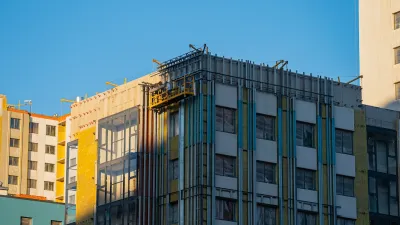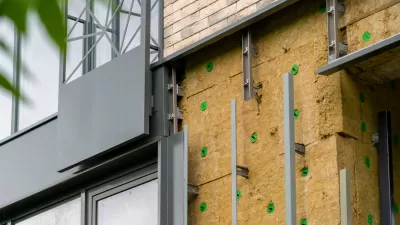Taking a page from the locavore food movement, an architectural competition in Vancouver asks entrants to design a home using materials made or recycled within 100 miles of the city, writes Mark Boyer.
According to Boyer, "The idea of a 100-mile house shouldn't be shocking: Historically, most homes were made using local materials simply because it was more practical. But in an age when even middle-class homeowners can order marble countertops from Italy and bamboo floors from China, creating a home entirely from local materials challenges builders to carefully consider every piece of the structure, from the foundation to the eaves."
This is the ethos that has driven an international competition organized by the Architecture Foundation of British Columbia. Inspiration can be found in the foundation's own backyard at the 1,150-suqare-foot home built by naturalist and writer Briony Penn in British Columbia, just across the Strait of Georgia from Vancouver, with help from builder Michael Dragland.
Besides the expected environmental benefits of building from local sources, Penn found wider sociological and economic benefits. "'"The 100-mile house is just fun,' Penn says. 'It provides a fun way to define how you're going to build a house, because you go out and you talk to all your neighbors, and it builds community and puts money back in the hands of everybody in your community.'"
FULL STORY: 100-Mile Houses Expand the Locavore Movement From Food to Architecture

Planetizen Federal Action Tracker
A weekly monitor of how Trump’s orders and actions are impacting planners and planning in America.

Maui's Vacation Rental Debate Turns Ugly
Verbal attacks, misinformation campaigns and fistfights plague a high-stakes debate to convert thousands of vacation rentals into long-term housing.

San Francisco Suspends Traffic Calming Amidst Record Deaths
Citing “a challenging fiscal landscape,” the city will cease the program on the heels of 42 traffic deaths, including 24 pedestrians.

Amtrak Rolls Out New Orleans to Alabama “Mardi Gras” Train
The new service will operate morning and evening departures between Mobile and New Orleans.

The Subversive Car-Free Guide to Trump's Great American Road Trip
Car-free ways to access Chicagoland’s best tourist attractions.

San Antonio and Austin are Fusing Into one Massive Megaregion
The region spanning the two central Texas cities is growing fast, posing challenges for local infrastructure and water supplies.
Urban Design for Planners 1: Software Tools
This six-course series explores essential urban design concepts using open source software and equips planners with the tools they need to participate fully in the urban design process.
Planning for Universal Design
Learn the tools for implementing Universal Design in planning regulations.
Heyer Gruel & Associates PA
JM Goldson LLC
Custer County Colorado
City of Camden Redevelopment Agency
City of Astoria
Transportation Research & Education Center (TREC) at Portland State University
Jefferson Parish Government
Camden Redevelopment Agency
City of Claremont





























